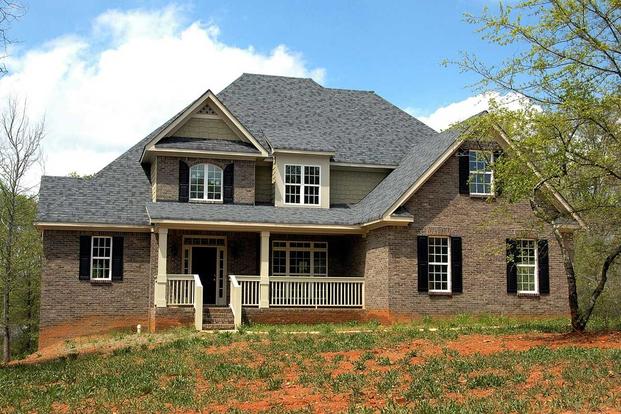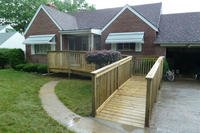There are several reasons why VA approved mortgage lenders appreciate VA home loan applicants. Such lenders appreciate their service to their country and do what they can in return. The VA has established lending guidelines that make it easier for a veteran or active duty service member to buy and finance a home to live in. Buyers don’t have to come up with a down payment which keeps many buyers on the sidelines longer when trying to save up enough money for a down payment and closing costs. Not having to jump over that hurdle is a big plus for veterans.
And as it relates to closing costs, veterans are limited to the types of closing costs they can pay. Veterans can pay for an appraisal report, credit report, title work, recording fees and origination charges. They cannot pay for example a lender’s processing fee. Prospective borrowers can always contact a loan officer and get a copy of estimated closing costs for their situation.
Lenders also like the VA home loan program because VA loans have the lowest default rate of any loan currently available in today’s marketplace. This is in spite of not having to come to the closing table with a down payment, which many in the past said the lack of a down payment on loan programs helped destabilize the mortgage market in the last decade. Yet veteran borrowers are a responsible group and they show that responsibility every month when they write the check for the mortgage payment.
But sometimes VA loans do go into default and the lender is forced to foreclose. Yet even in this unfortunate event, the lender again appreciates the VA loan program because it comes with a guarantee.
The Guarantee Explained
The guarantee isn’t what many first think it is. It doesn’t guarantee the borrowers will get approved for a VA loan. The VA home loan for a purchase requires a decent credit history and the lender will pull a credit report and request credit scores. While the VA doesn’t issue guidelines regarding a minimum credit score, VA lenders do, typically around 620 or as low as 600.
Employment and income is also a requirement for a VA approval. The lender will ask for copies of paycheck stubs and W2 forms or maybe even federal income tax returns. To make sure there are enough funds to take care of closing costs, lenders ask for copies of recent bank statements.
The guarantee is in favor of the lender but is paid for by the borrower in the form of a mortgage insurance policy. A mortgage insurance policy doesn’t cover making monthly payments should the borrowers be unable to pay for some reason but does provide the lender with some compensation should the loan ever go into foreclosure. This mortgage insurance policy is simply referred to by lenders as the VA Home Loan Guarantee and is financed by what is known as the Funding Fee.
If the lender is ever forced to follow through with a foreclosure then lender is then compensated for 25 percent of the loss. Say for example the lender and the borrowers have been trying to work out a situation and repayment plan but unfortunately the gross monthly income has been cut in half and they can no longer afford the mortgage. The outstanding loan balance is $200,000 so the lender is compensated at 25 of that amount, or $50,000.
The Math
The amount of the funding fee will vary based upon the type of loan, the nature of the borrower, the amount of a down payment, if any, and the term of the loan. The funding fee can also change based upon whether or not the borrowers have used a VA home loan in the past.
For example, for a first time veteran buyer is 2.15 percent of the sales price for a zero money down VA home loan for a veteran or eligible active duty service member. If that same borrower were to make a 5.0 percent down payment, the funding fee drops to 1.50 percent of the sales price.
Let’s say the borrower is a veteran and wants a zero down VA home loan and is buying a first home. The funding fee for this transaction on a $200,000 sales price is 2.15 percent of that amount, or $4,300. However, this fee does not have to be paid out of pocket but instead is rolled into the loan amount. Again, in this example, the final loan amount would be $204,300 and the amount used to calculate monthly payments.
You should also know that VA loans only have one mortgage insurance policy while other government backed loan programs such as the FHA or USDA loan do. These two loans have an additional mortgage insurance policy that is paid annually broken down into monthly installments. This increases the monthly payment and reduces affordability. VA loans do not have a monthly mortgage insurance payment.
Now let’s say that same borrower wanted to refinance later on and again use the VA home loan. The funding fee for a subsequent use for that same individual is 3.30 percent of the loan balance and is also rolled into the loan and does not have to be paid for out of pocket.
One final note here, it’s always important to make sure the lender you choose is experienced with the VA home loan process. You might expect with a government-backed mortgage there will be some additional paperwork involved and the VA loan is no exception. In fact, there is a tad more compared to other programs. You’ll have to obtain your Certificate of Eligibility for example from the VA. A loan officer with VA home loan experience knows to order that document directly from the VA instead of you having to mail, fax or otherwise make your request on your own. There is also what is known as “residual income” requirements for a VA home loan that other programs do not have. To ensure a smooth approval process, experience counts.










